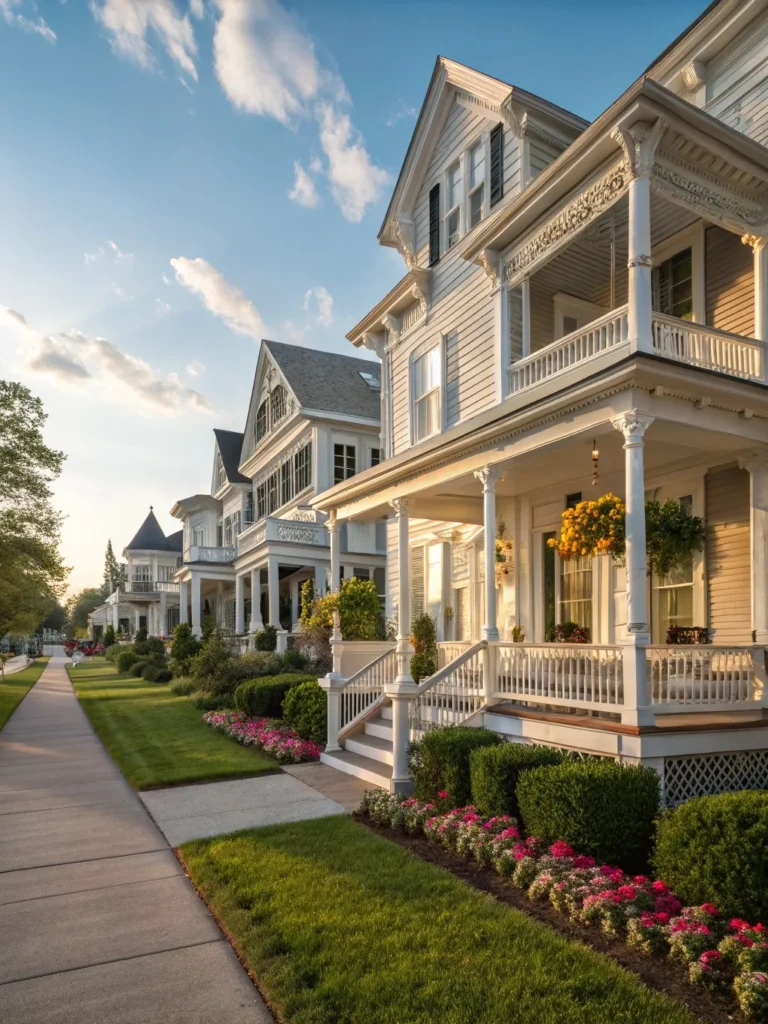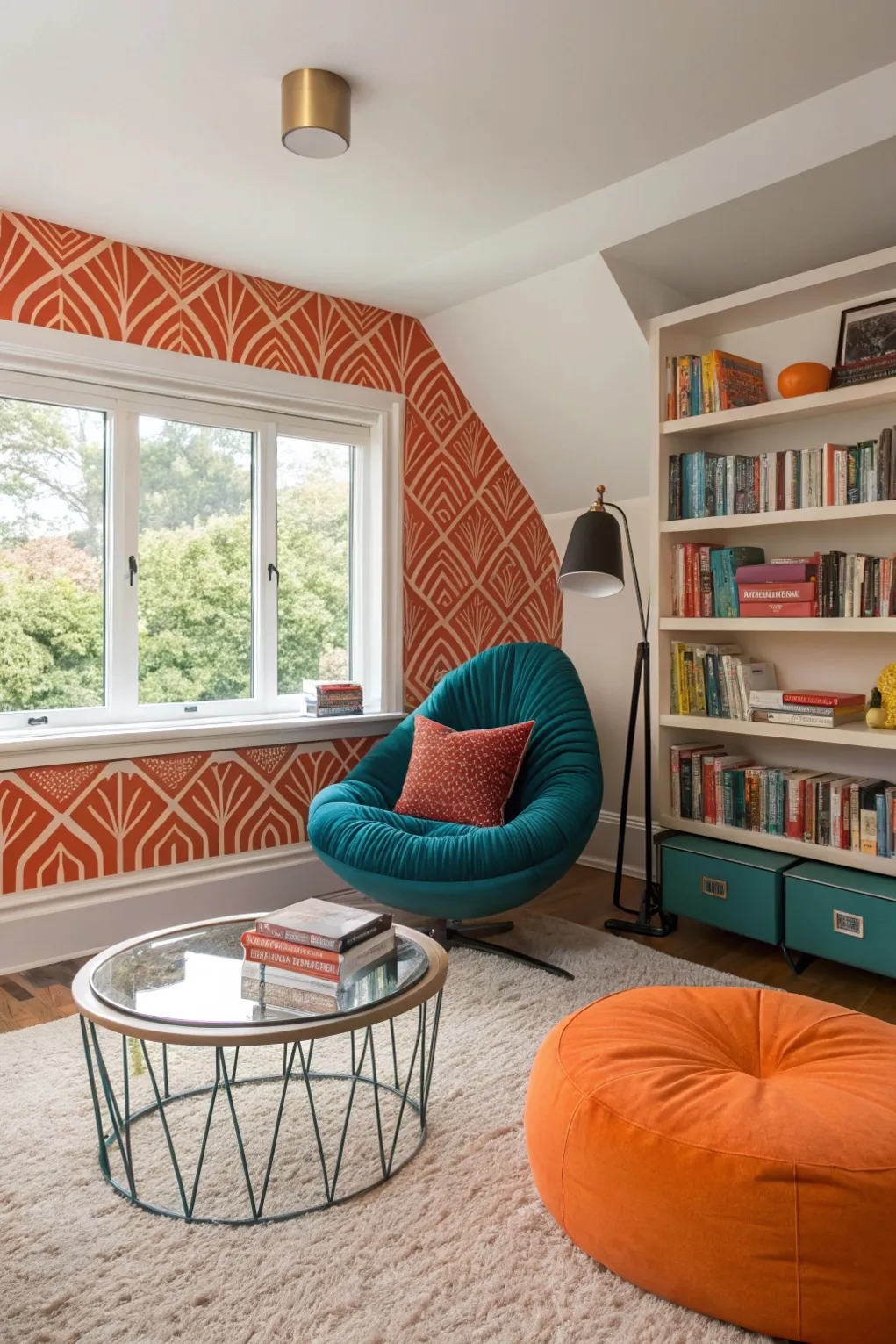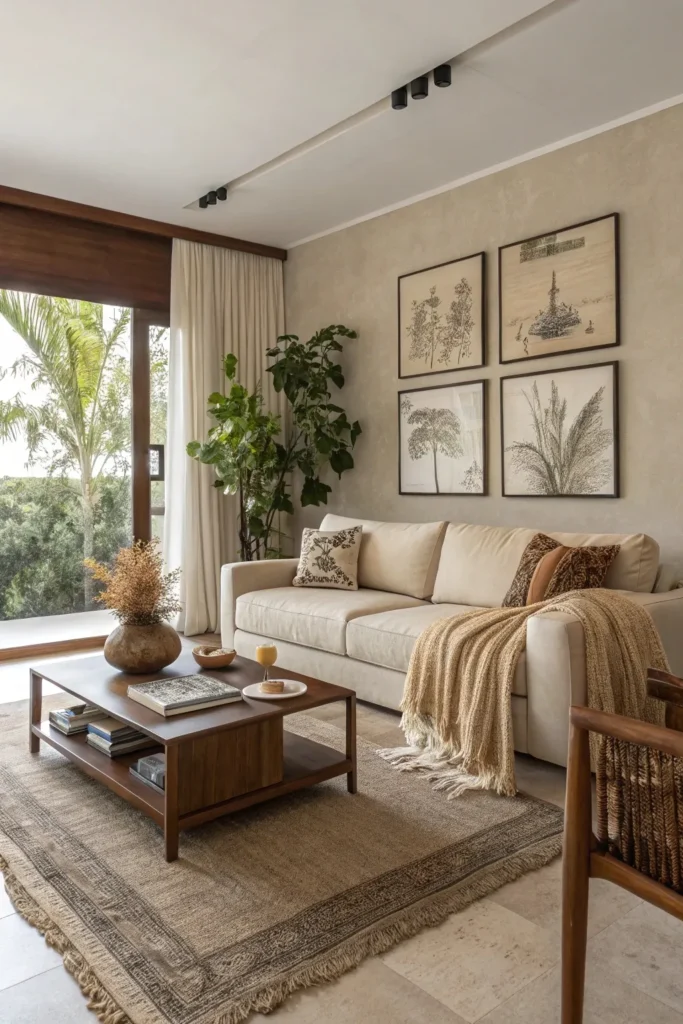When you think about Colonial houses, you’re likely picturing the stately elegance that defines this iconic architecture. From the Georgian symmetry to the quaint charm of Cape Cod styles, these homes offer more than just aesthetic appeal; they tell stories of a rich heritage. You might be surprised by the unique features that set each style apart, as well as how some have been thoughtfully renovated for modern living. As you explore these 27 Colonial houses, you’ll discover elements that make them timeless and relevant today—yet, there’s much more to uncover about their enduring charm.
Colonial House in Williamsburg
The charm of Colonial houses in Williamsburg lies in their timeless elegance and historical significance.
You can’t help but admire the intricate Williamsburg architecture that reflects the town’s Colonial heritage.
Each home, with its symmetrical design and classic features, tells a story of the past.
As you explore, you’ll feel a deep connection to the history woven into these remarkable structures.
Georgian Colonial Style
Georgian Colonial style embodies grandeur and symmetry, making it a standout in the domain of architectural design.
You’ll appreciate how Georgian architecture emphasizes balanced proportions and elegant details.
With its iconic columns and decorative moldings, this style showcases Georgian symmetry that creates a sense of harmony.
Living in a Georgian Colonial home connects you to a rich historical narrative while enjoying timeless beauty.
Saltbox Colonial Home
While Georgian Colonial homes impress with their formal elegance, Saltbox Colonial homes offer a more rustic charm that reflects early American life.
Characterized by their distinctive saltbox design, these homes feature a long, sloping roof that enhances their cozy appeal.
Rooted in saltbox history, they were practical solutions for early settlers, providing ample living space while adapting to the harsh New England climate.
Federal Style Architecture
Emphasizing symmetry and elegance, Federal Style Architecture emerged in the United States during the late 18th and early 19th centuries.
You’ll notice federal style characteristics like rectangular shapes, decorative crown moldings, and fanlights.
Inspired by neoclassical design, this style reflects European influences, particularly from England and France.
When you explore these homes, appreciate their refined detailing and harmonious proportions that truly stand out.
Cape Cod Colonial Design
Cape Cod Colonial Design captures the simplicity and charm of New England’s coastal homes.
You’ll love the classic elements like shingle roofs that blend seamlessly into the landscape, enhancing the coastal aesthetics.
The homes often feature symmetrical facades and dormer windows, inviting natural light.
This design not only offers timeless beauty but also evokes a sense of warmth and comfort, perfect for seaside living.
Dutch Colonial Charm
Dutch Colonial charm radiates a unique blend of elegance and practicality that many find irresistible.
Rooted in Dutch architecture, it showcases Colonial influences through its distinct design elements.
You’ll appreciate the historical significance reflected in architectural features like gambrel roofs and wide eaves.
This style embraces cultural heritage while inspiring modern interpretations and regional variations, ensuring it remains timeless in today’s homes.
Southern Colonial Beauty
Southern Colonial beauty captures your imagination with its stately presence and inviting charm.
You’ll appreciate the southern charm reflected in grand columns and expansive porches that beckon you to relax.
These homes embody plantation elegance, with their intricate moldings and lush gardens, creating a serene atmosphere.
You can’t help but feel transported to a time of grace and hospitality in these remarkable dwellings.
New England Colonial Houses
In the heart of the 17th century, New England Colonial houses emerged as symbols of resilience and practicality.
You’ll notice their distinctive features, like steep roofs and symmetrical facades, reflecting New England architecture’s clever adaptation to the climate.
Made from local Colonial building materials such as wood and stone, these homes showcase a blend of functionality and timeless charm that still captivates today.
Colonial Revival Favorites
Drawing inspiration from the original Colonial designs, Colonial Revival favorites capture the essence of early American architecture while infusing modern sensibilities.
These homes showcase colonial design trends, blending traditional elements like symmetry and gabled roofs with contemporary features.
You’ll notice the lasting colonial architecture influences in details such as brick facades and shuttered windows, creating a timeless appeal that resonates today.
Post and Beam Construction
Colonial houses often feature intricate designs that highlight craftsmanship, but another remarkable style that embodies this spirit is post and beam construction.
This method offers several post and beam advantages, such as enhanced structural integrity and design flexibility.
You’ll also appreciate the post and beam aesthetics, which showcase exposed timber and spacious interiors, creating a warm and inviting atmosphere that complements traditional Colonial charm.
Classic Colonial Porches
Classic Colonial porches frequently serve as the welcoming heart of these homes, inviting you to relax and enjoy the outdoors.
The porch design complements colonial aesthetics, featuring sturdy columns, wide railings, and ample seating.
You’ll appreciate how these porches create a passage between the indoors and outdoors, enhancing the home’s charm while providing a perfect spot for gatherings or quiet moments.
Symmetrical Facades
Symmetrical facades are a hallmark of colonial architecture, embodying balance and harmony that instantly catch your eye.
You’ll notice how symmetrical entrances draw you in, flanked by windows that create balanced proportions.
This design not only enhances curb appeal but also reflects a sense of order and elegance, making these homes a timeless choice for those seeking classic charm.
Timeless Colonial Interiors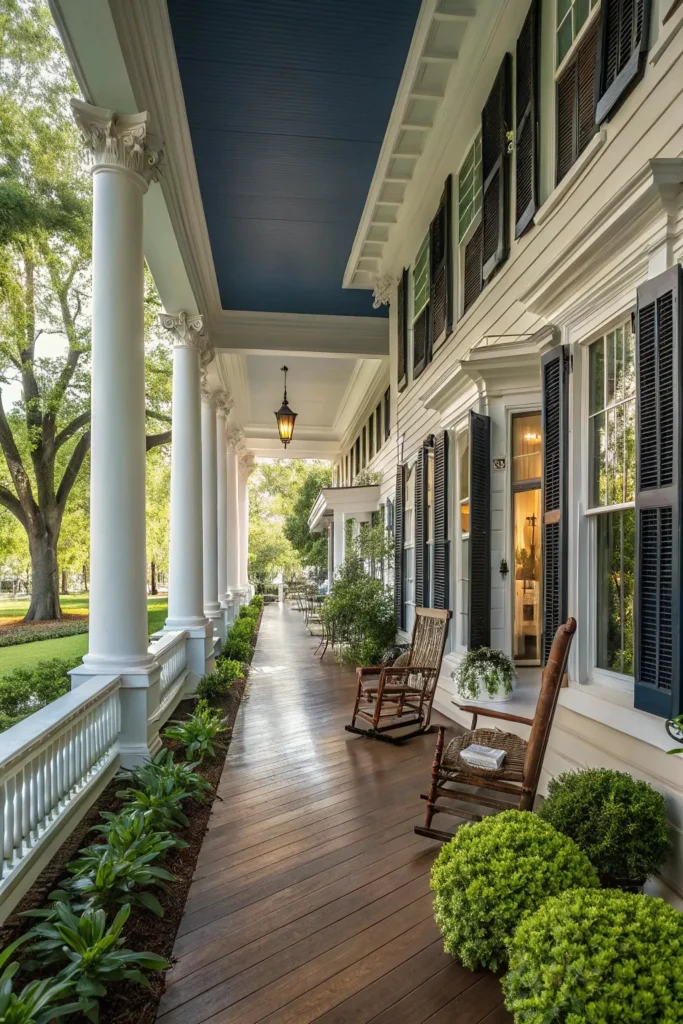
The charm of timeless colonial interiors lies in their ability to blend warmth and sophistication seamlessly.
You’ll find that timeless furnishings, like sturdy wooden tables and elegant chairs, create inviting spaces.
Classic color palettes, featuring soft creams and deep blues, enhance the overall aesthetic, making every room feel both cozy and refined.
Embrace these elements to achieve a truly classic colonial ambiance.
Historic Preservation Efforts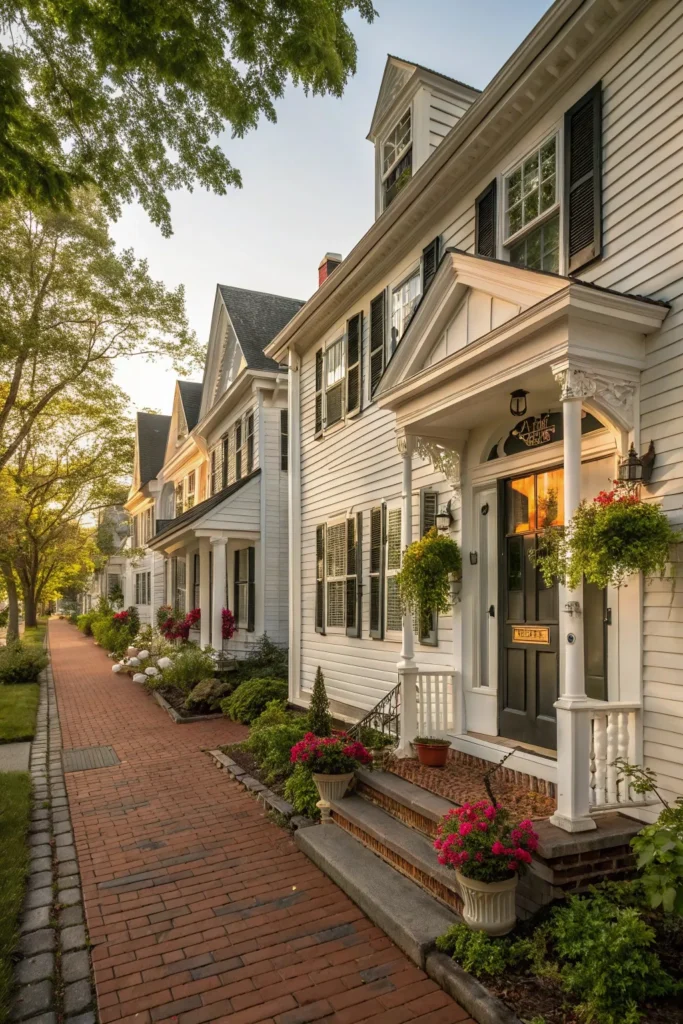
Preserving historic colonial houses isn’t just about maintaining their aesthetic appeal; it’s about honoring the stories they tell.
You play a vital role in historic preservation, ensuring these structures retain their architectural significance.
Iconic White Columns
Often, when you think of colonial architecture, the striking white columns immediately come to mind.
These iconic designs not only enhance the beauty of homes but also hold architectural significance, symbolizing strength and elegance.
Their presence creates a sense of history and charm, inviting admiration and sparking curiosity about the past.
You can’t help but appreciate their timeless appeal in every colonial structure.
Elegant Gable Roofs
Gable roofs are a striking feature that elevates the aesthetic of colonial houses, offering both style and functionality.
You’ll appreciate the variety of gable roof styles, each contributing to the home’s charm. The sharp angles and clean lines promote architectural symmetry, enhancing visual appeal.
Whether steep or shallow, these roofs add character while effectively shedding rain and snow, ensuring durability.
Colonial Brickwork Techniques
The craftsmanship behind colonial brickwork techniques showcases a blend of artistry and practicality that defines these historic homes.
When you admire a brick facade, you’re witnessing historical craftsmanship that emphasizes durability and beauty. Each brick was carefully laid, often in intricate patterns, highlighting the builder’s skill.
These techniques not only enhance the visual appeal but also guarantee the structural integrity of these timeless residences.
Authentic Colonial Materials
Colonial homes are renowned not just for their brickwork but also for the authentic materials that define their character.
You’ll appreciate how colonial craftsmanship techniques utilize local resources, from timber to stone, ensuring durability and charm.
These authentic building materials not only enhance the home’s aesthetic but also reflect the history and tradition of the era, creating a timeless appeal.
Charming Colonial Windows
While many features give colonial homes their charm, the windows truly stand out as a defining element.
You’ll love the classic appeal of colonial grid patterns, which beautifully frame your view.
Pair these windows with charming window treatments, like flowing drapes or wooden shutters, to enhance their character.
Together, they create a warm and inviting atmosphere that captures the essence of colonial style.
Spacious Colonial Layouts
Characterized by their thoughtful design, spacious layouts are another hallmark of colonial homes.
You’ll appreciate the open floor plans that create a seamless flow between rooms, perfect for entertaining or family gatherings.
Additionally, these homes often feature multi-functional spaces, allowing you to adapt areas to suit your needs, whether it’s a home office, playroom, or cozy reading nook.
Enjoy the versatility!
Modern Colonial Adaptations
Modern adaptations of colonial homes frequently blend traditional elements with contemporary design, creating a unique living experience.
You can enhance your space by using colonial color palettes—like soft blues and warm creams—paired with modern colonial furnishings that offer clean lines and comfort.
This fusion not only honors history but also provides a fresh, stylish ambiance perfect for today’s lifestyle.
Notable Colonial Landmarks
Across the United States, numerous colonial landmarks stand as symbols to the nation’s rich history and architectural heritage.
You’ll find remarkable buildings like Mount Vernon and Independence Hall, showcasing unique architectural features that reflect their era.
These sites not only highlight the craftsmanship of the time but also hold immense historical significance, offering insight into the lives of early Americans and their enduring legacy.
Colonial House Landscaping
Transforming your colonial house’s landscape can greatly enhance its timeless charm and appeal.
Focus on colonial garden design by incorporating symmetrical layouts, boxwood hedges, and period-appropriate flower beds.
Add colonial landscape features like stone pathways and wrought iron gates to create a cohesive look.
Rich Colonial History
While exploring the rich colonial history of your home, you’ll uncover a fascinating story that reflects the values and traditions of an era marked by exploration and settlement.
You’ll recognize the colonial influences in architecture and design that speak to its historical significance.
These elements not only shape your home’s character but also connect you to a broader narrative of resilience and community.
Artistic Colonial Details
The rich colonial history that shapes your home is mirrored in the artistic details that adorn its architecture.
You’ll appreciate the elegance of artistic moldings that frame your doorways and windows, enhancing the charm of each room.
Decorative cornices crown your ceilings, adding a touch of sophistication.
These elements not only reflect your home’s heritage but also create a warm, inviting atmosphere.
Sustainable Colonial Renovations
Many homeowners are embracing sustainable colonial renovations to honor their home’s history while reducing their environmental impact.
By choosing eco-friendly materials, like reclaimed wood and low-VOC paints, you can preserve the charm of your colonial home.
Incorporating energy-efficient upgrades, such as modern insulation and energy-star appliances, will enhance comfort and lower utility bills, making your renovation both stylish and responsible.
Inspiring Colonial Neighborhoods
As you stroll through charming colonial neighborhoods, you’ll discover a tapestry of history and architecture that inspires a sense of community and pride.
You’ll encounter colonial architectural influences, from stately homes to quaint cottages.
Consider taking historic neighborhood tours, where you can immerse yourself in stories of the past, appreciate the craftsmanship, and understand how these neighborhoods have shaped modern living.

